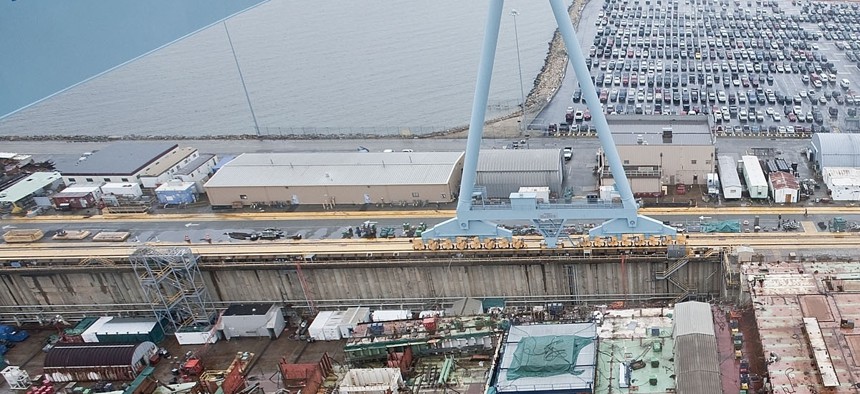
The USS Gerald R. Ford is under construction at Huntington Ingalls Newport News Shipbuilding in Virginia. U.S. Navy
GAO Report Slams Navy’s New Ford-Class Aircraft Carriers
After delays and cost overruns, the USS Gerald Ford is now estimated to run $12.8 billion -- 22 percent more than planned, according to the Government Accountability Office. By Stephanie Gaskell
The USS Gerald R. Ford, the Navy’s newest aircraft carrier, won’t be ready for its planned 2016 commissioning due to poor testing, construction delays and cost overruns, a Government Accountability Office review warned Friday.
The ship’s “technical, design, and construction challenges” of the CVN78, the first of three new nuclear-powered aircraft carriers, “have led to significant cost increases and reduced the likelihood that a fully functional ship will be delivered on time,” the GAO said. “The Navy has achieved mixed progress to date developing CVN 78’s critical technologies, such as a system intended to more effectively launch aircraft from the ship.”
Meeting the 2016 deadline for commissioning the ship also will prove difficult, the GAO said. “Progress in constructing CVN 78 has been overshadowed by inefficient out-of-sequence work, driven largely by material shortfalls, engineering challenges and delays developing and installing critical technology systems. These events are occurring in a constrained budget environment, even as lead ship costs have increased by over 22 percent since construction authorization in fiscal year 2008 -- to $12.8 billion. Additional increases could follow due to uncertainties facing critical technology systems and shipbuilder underperformance.”
Delays and cost overruns for the USS Gerald R. Ford also threaten construction of the USS John F. Kennedy, the second of the Ford-class ships. GAO scoffed at the Pentagon's cost estimate for the CVN 79 as “optimistic.”
The Ford-class ships are designed to give the Navy the ability to fly more aircraft on more missions than earlier carriers, boost margins for weight and stability so the ship's contents can be reconfigured over its lifetime and has nearly three times the electrical generating capability. The Pentagon is spending $43 billion to build three of them.
In its response, the Navy said some of the findings of the GAO report were “overstated” but agreed to rework its testing schedule for the CVN 78, which is set for delivery in 2016, but won’t be deployable until 2019.
Read the full GAO report here.
NEXT STORY: How Can Today’s Navy ‘Learn on the Run’?
